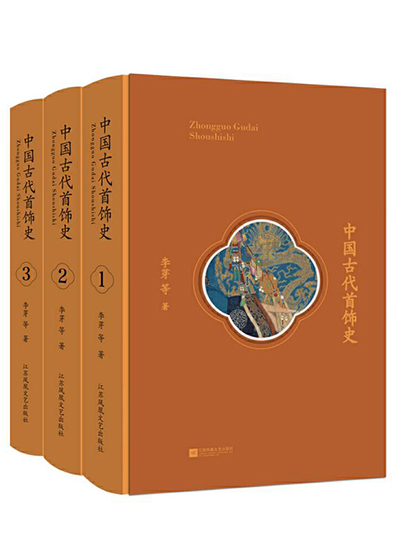A glimpse of Chinese civilization through jewelry

A History of Ancient Chinese Jewelry
Coauthored by several scholars including Li Ya, a professor from the Stage Design Department at Shanghai Theater Academy, A History of Ancient Chinese Jewelry picks the gems of Chinese jewelry traditions from the extensive Chinese civilization.
The first chapter is a systematic overview of ancient Chinese jewelry and its unique cultural features, within the overall framework of the Chinese civilization. The following chapters analyze the five major jewelry categories, namely: headwear, earrings, neck (chest) adornments, arm adornments, and hand (foot) adornments, in chronological order from primitive society and the pre-Qin (prior to 221 BCE) era until the Qing Dynasty (1644–1911).
Visually presenting gorgeous images of ancient Chinese jewelry, the book reproduces the characteristics of ancient Chinese jewelry in terms of history, culture, types, themes, patterns, and crafts. It is equipped with more than 2,000 color pictures or line drawings. More than 100 diagrams are supplied to clearly display the development of various jewelry categories in ancient times, and detail the excavation sites, collection institutions, sizes, materials, and data sources for each representative piece of jewelry. This shows the systematic and scientific nature of the study of ancient jewelry.
Great efforts have been made to search for unearthed jewelry as comprehensively as possible. Apart from excavated classic cultural relics, the book incorporates a mass of materials unearthed in recent years. In addition, a systematic tour was held on the civilizations which produced ancient Chinese jewelry, ranging from unearthed murals, surviving murals, sculptures, scroll paintings, to related documents.
There have been interpretations of jewelry from the fields of archaeology, technical science, design science, or from sociology. However, due to the usually small size of the jewelry itself and the scattered distribution of related materials, the field still lacks general history studies. In this sense, the book fills in gaps in the study of ancient Chinese jewelry.
Apart from elaborating on the Han ethnic group, the book organically compiles the jewelry traditions of other ethnic groups in ancient China. Special discussions are conducted on the jewelry history in the Khitan, Jurchen, Mongolian, and Manchu ethnic groups in ancient China, which led such minority regimes as the Liao (916–1125), Jin (1151–1234), Yuan (1271–1368), and Qing dynasties. All these portray a history of jewelry civilization jointly built by the Chinese nation.
This article was edited and translated from Guangming Daily.
Edited by YANG LANLAN
